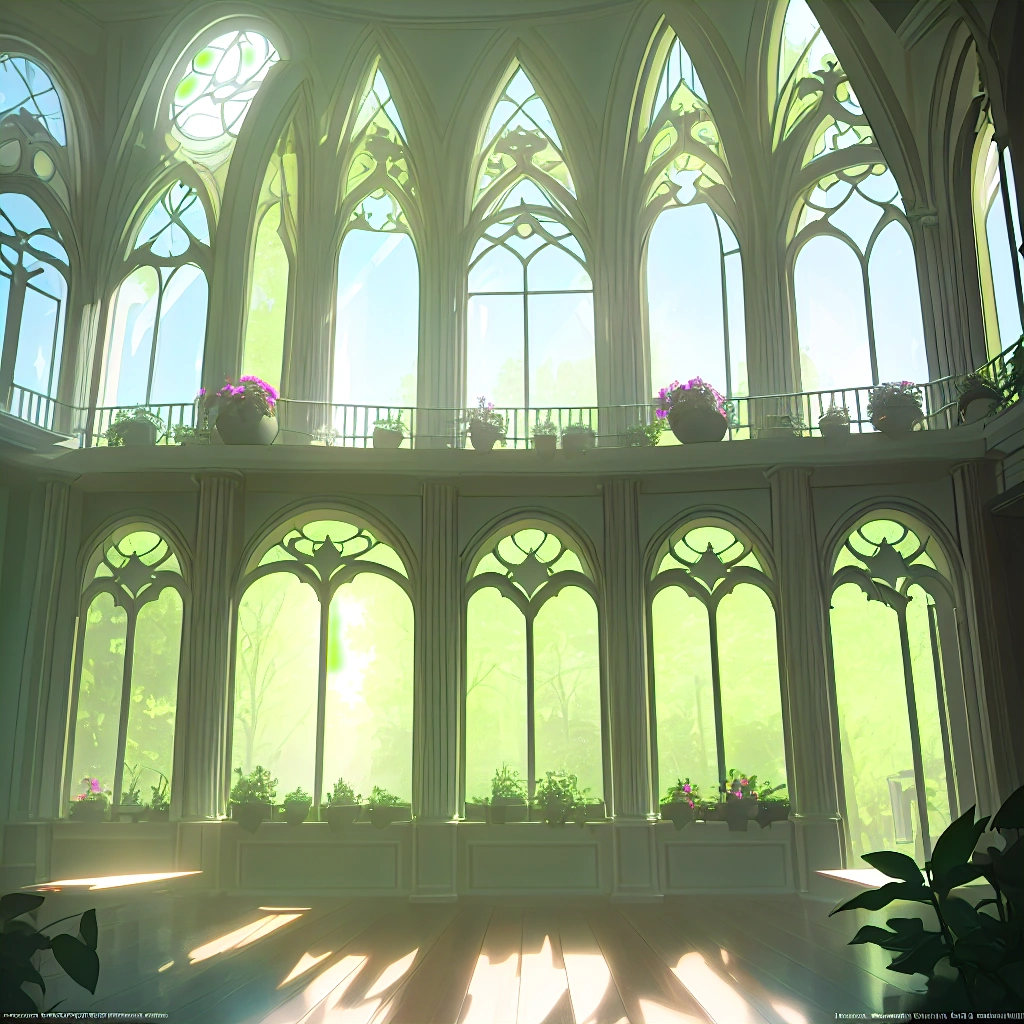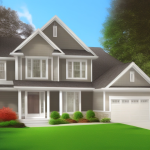Maximizing Natural Light and Space: Architectural Strategies for Integrating Garden and Bay Windows
Illuminating Homes: The Power of Garden and Bay Windows
In an era where natural light and spaciousness are highly valued in residential design, garden and bay windows stand out as elegant solutions. These architectural features not only enhance the aesthetic appeal of a home but also significantly impact its interior environment. By strategically integrating these windows, homeowners can transform ordinary rooms into sun-drenched havens, blurring the lines between indoor comfort and outdoor beauty. This guide delves into the design principles and practical considerations for incorporating garden and bay windows, offering insights into maximizing their benefits while addressing common challenges.
From an architectural standpoint, both garden window design and bay window architecture represent intentional efforts to manipulate space and light. Bay windows, with their projecting structure, create alcoves that can serve as reading nooks or breakfast areas, effectively expanding the usable square footage of a room. Garden windows, often installed in kitchens, offer a miniature greenhouse effect, fostering plant growth and bringing the outdoors in. The choice between these options depends heavily on the homeowner’s aesthetic preferences, spatial constraints, and desired functionality.
Careful consideration of window materials, ranging from traditional wood to modern vinyl and fiberglass, is crucial for both durability and aesthetic harmony with the existing architecture. The strategic incorporation of these window styles directly addresses the demand for natural light in homes, a key driver in modern residential design. Beyond aesthetics, ample natural light contributes to improved mood, enhanced productivity, and reduced reliance on artificial lighting, translating to lower energy bills. Window glazing technology plays a significant role in maximizing light transmission while minimizing heat gain or loss.
Low-E coatings, for example, selectively filter sunlight, allowing visible light to pass through while blocking harmful UV rays and infrared radiation. This is particularly important in south-facing installations, where excessive heat gain can lead to uncomfortable interior temperatures and increased air conditioning costs. Proper window insulation is also paramount to maintaining energy efficiency, preventing drafts, and ensuring a comfortable indoor environment year-round. Ultimately, the decision to invest in bay window installation or garden window installation is a significant one, requiring careful consideration of window installation costs and the potential return on investment.
While the initial outlay may seem substantial, the long-term benefits, including increased property value, reduced energy consumption, and enhanced quality of life, often justify the expense. Furthermore, window replacement ROI can be significantly improved by selecting energy-efficient models and ensuring proper installation. Factors such as the quality of workmanship, the choice of window materials, and the effectiveness of window insulation all contribute to the overall value proposition. A thorough assessment of these factors, coupled with a clear understanding of the homeowner’s needs and priorities, is essential for making an informed decision that maximizes both aesthetic appeal and financial return.
Garden vs. Bay: Defining Architectural Features and Benefits
While often grouped together in homeowner discussions, garden and bay windows represent distinct architectural choices, each offering unique benefits. A bay window, a classic element of bay window architecture, is defined as a composite of three or more windows projecting outward from a wall. This creates a ‘bay’ within the room, effectively expanding the usable floor space. The configuration typically features a large, often fixed, central ‘picture window’ flanked by smaller windows angled to capture natural light in homes from various directions.
Bay windows excel at providing panoramic views and creating a sense of spaciousness, adding considerable aesthetic and market value to a property. Considering bay window installation? Factor in structural modifications and the impact on window replacement ROI. Garden windows, in contrast, are purpose-built to function as miniature greenhouses, making them a popular choice for kitchens. Their defining characteristic is a box-like structure that protrudes outward, featuring glass on all sides, including a top shelf ideal for cultivating herbs and plants.
The primary function of garden window design is to maximize sunlight exposure for horticultural purposes, creating an indoor oasis. When evaluating garden window installation, consider the impact of window glazing options on plant health and the overall thermal performance of the window. The choice of window materials also plays a crucial role in durability and maintenance. From an energy-efficiency perspective, both window types require careful consideration of window insulation and window glazing. Modern low-E coatings and gas fills can significantly reduce heat transfer, minimizing energy loss and lowering utility bills. When assessing window installation costs, remember to factor in the long-term savings associated with energy-efficient windows. Furthermore, the choice between bay and garden windows impacts the overall architectural style of the home. Bay windows often complement Victorian or traditional designs, while garden windows can add a touch of modern functionality to any kitchen. Ultimately, the selection depends on the homeowner’s aesthetic preferences, functional needs, and budget considerations.
Enhancing Natural Light, Ventilation, and Spatial Perception
Both garden and bay windows excel at maximizing natural light in homes, a critical factor in modern architectural design. Their inherent design principles allow sunlight to penetrate deeper into interior spaces, significantly reducing reliance on artificial lighting and fostering a brighter, more inviting atmosphere. Bay window architecture, with its multiple panes angled to capture light from various points, ensures consistent illumination throughout the day, effectively mitigating shadows and enhancing the overall ambiance of a room.
Garden window design, characterized by its all-glass construction, functions as a miniature greenhouse, efficiently collecting solar energy and warming adjacent spaces while providing optimal light conditions for indoor plants. This passive solar gain can contribute to reduced heating costs, a key aspect of energy-efficient windows. Beyond illumination, these windows significantly impact ventilation and spatial perception. Operable side windows, commonly found in bay window configurations, facilitate natural cross-breezes, improving indoor air quality and reducing the need for air conditioning.
Garden windows often incorporate adjustable vents, enabling precise control over temperature and humidity levels, which is particularly beneficial for plant health and preventing condensation buildup. Furthermore, the projection of both bay and garden windows alters the perceived dimensions of a room, creating an illusion of greater spaciousness. A bay window installation, for instance, can create a cozy nook, expanding the usable floor area and providing a comfortable seating area with panoramic views. A garden window installation adds depth and visual interest, particularly in kitchens, transforming an otherwise ordinary space into a vibrant focal point.
When considering window replacement, the ROI extends beyond aesthetics and spatial improvements; it encompasses energy savings and increased property value. Selecting appropriate window materials and window glazing options is crucial for optimizing energy efficiency. Low-E coatings and argon gas fills significantly improve window insulation, reducing heat transfer and minimizing energy consumption. While bay window installation and garden window installation costs can vary depending on size, materials, and complexity, the long-term benefits, including reduced energy bills and enhanced natural light, often outweigh the initial investment. A thorough cost-benefit analysis, factoring in potential energy savings and the impact on property value, is essential for making informed decisions about window replacement.
Optimal Placement: Solar Orientation, Privacy, and Aesthetics
Optimal placement is paramount to maximizing the benefits of garden and bay windows. Solar orientation plays a crucial role; south-facing windows receive the most sunlight, ideal for garden windows and creating warm, sunlit spaces. East-facing windows capture morning light, perfect for kitchens or breakfast nooks, while west-facing windows provide afternoon warmth, suitable for living rooms. Privacy concerns must also be addressed. Strategic landscaping, window treatments (blinds, shades, curtains), or the use of frosted or textured glass can mitigate unwanted views.
Aesthetically, the window style should complement the architectural style of the home. Bay windows often suit Victorian or traditional homes, while garden windows can add a modern touch to contemporary designs. Consider the view as well; positioning a bay window to overlook a garden or scenic landscape enhances its appeal. Beyond simple orientation, consider the specific architectural advantages each window type offers. Bay window architecture, with its multifaceted design, not only expands interior space but also provides panoramic views, effectively turning a standard window into a viewing platform.
The angles of the windows capture ambient light throughout the day, maximizing natural light in homes and reducing reliance on artificial illumination. Garden window design, conversely, excels at creating miniature greenhouses, ideal for cultivating herbs and plants, bringing the outdoors in and enhancing the aesthetic appeal of kitchens and sunrooms. Proper planning ensures these features become integral to the home’s overall design, not just tacked-on additions. Window materials and window glazing significantly impact both energy efficiency and long-term window replacement ROI.
Opting for energy-efficient windows with low-E coatings and argon gas fills can drastically reduce heat transfer, lowering energy bills and increasing comfort. Window insulation is a key factor, especially in extreme climates. While initial window installation costs might be higher for premium materials and glazing options, the long-term savings on energy consumption and reduced maintenance often outweigh the initial investment. Furthermore, government incentives and tax credits for energy-efficient upgrades can further improve the return on investment, making it a financially sound decision for homeowners looking to enhance their property’s value and sustainability.
The practicalities of bay window installation and garden window installation also influence placement decisions. Bay windows, due to their size and structural demands, often require professional installation and may necessitate modifications to the existing wall structure. This can impact window installation costs. Garden windows, being smaller and lighter, are generally easier to install, but proper sealing and flashing are crucial to prevent water damage and maintain energy efficiency. Careful consideration of these factors, alongside aesthetic preferences and solar orientation, ensures that the chosen window not only enhances the home’s beauty but also provides lasting value and performance. A well-planned window replacement project can significantly improve a home’s comfort, energy efficiency, and resale value.
Structural Integrity, Energy Efficiency, and Weatherproofing
Structural integrity is paramount when incorporating garden and bay windows, directly impacting both safety and long-term energy efficiency. Bay window architecture, with its projecting structure, necessitates meticulous attention to load-bearing capabilities. A structural engineer should assess the existing framework to determine if reinforcement is required. Inadequate support can lead to costly repairs down the line, negating any initial savings. Proper bay window installation involves reinforced headers and strategically placed brackets to evenly distribute the weight, preventing sagging and ensuring the window remains securely integrated with the home’s structure.
Garden windows, while generally lighter, still require careful consideration during garden window installation to ensure a weathertight seal and prevent moisture intrusion. Energy efficiency is intrinsically linked to the choice of window materials and glazing. Modern window glazing options, such as double- or triple-pane glass with low-E coatings and argon gas fills, dramatically reduce heat transfer, minimizing energy costs. Selecting the appropriate window insulation is equally crucial. High-quality insulation around the window frame prevents drafts and condensation, contributing to a more comfortable and energy-efficient home.
For instance, fiberglass frames offer superior insulation compared to aluminum, while wood provides a classic aesthetic but demands more diligent maintenance to prevent rot and air leakage. The initial investment in energy-efficient window materials directly translates to long-term savings on heating and cooling bills, significantly improving window replacement ROI. Weatherproofing is another critical aspect of window installation. Proper sealing and flashing are essential to protect against water damage and air infiltration, preventing costly structural repairs and maintaining a comfortable indoor environment.
Consider the local climate when selecting window materials; vinyl and fiberglass are particularly resilient in harsh weather conditions. Furthermore, the quality of the window installation is just as important as the materials themselves. A poorly installed window, even with the best energy-efficient features, can lead to significant energy loss and potential water damage. Investing in professional window installation ensures that the windows are properly sealed and flashed, maximizing their energy efficiency and longevity. Understanding window installation costs upfront helps homeowners make informed decisions that balance initial investment with long-term savings and enhanced home value. Prioritizing natural light in homes also improves general well being.
Real-World Examples, Case Studies, and Cost Considerations
Numerous examples showcase the successful integration of garden and bay windows. In Victorian-era homes, bay window architecture is often incorporated into living rooms, creating elegant seating areas with panoramic views, effectively maximizing natural light in homes. Modern kitchens frequently feature garden window design above the sink, providing a sunny space for growing herbs and adding a touch of greenery. Case studies reveal that homes with strategically placed bay windows experience increased natural light levels by up to 50%, reducing reliance on artificial lighting.
Similarly, garden windows have been shown to improve indoor air quality by introducing fresh herbs and plants. Window installation costs represent a significant consideration. Vinyl windows are generally more affordable, offering a balance of cost-effectiveness and energy efficiency, while wood frames provide superior aesthetics but at a higher price point. The choice of window materials significantly impacts both the initial investment and long-term maintenance. Furthermore, selecting appropriate window glazing and window insulation is critical for maximizing energy efficiency and minimizing heat loss, thereby reducing utility bills.
Bay window installation, due to its complexity, typically incurs higher labor costs compared to garden window installation. Accurate budgeting requires detailed quotes from reputable contractors, considering all aspects of the project. Understanding the return on investment (ROI) for window replacement requires a holistic approach. While immediate benefits include enhanced aesthetics and increased natural light, the long-term financial gains stem from reduced energy consumption and potential increases in property value. Energy-efficient windows, particularly those with advanced glazing technologies, contribute significantly to lowering heating and cooling costs.
Moreover, a well-executed bay window or garden window installation can enhance a home’s curb appeal, making it more attractive to potential buyers. Therefore, when evaluating window replacement, homeowners should consider both the upfront costs and the projected long-term savings and value appreciation. Beyond cost, homeowners should also consider the architectural style of their home when selecting window types. Bay windows complement Victorian and Edwardian homes, while garden windows suit cottage-style or contemporary designs. Proper window installation by qualified professionals is crucial to ensure long-term performance and prevent costly repairs. Neglecting structural considerations during bay window installation, for instance, can lead to settling and water damage. Similarly, improper sealing around garden windows can compromise energy efficiency and promote mold growth. Engaging experienced contractors with a proven track record is essential for a successful and durable window project.


